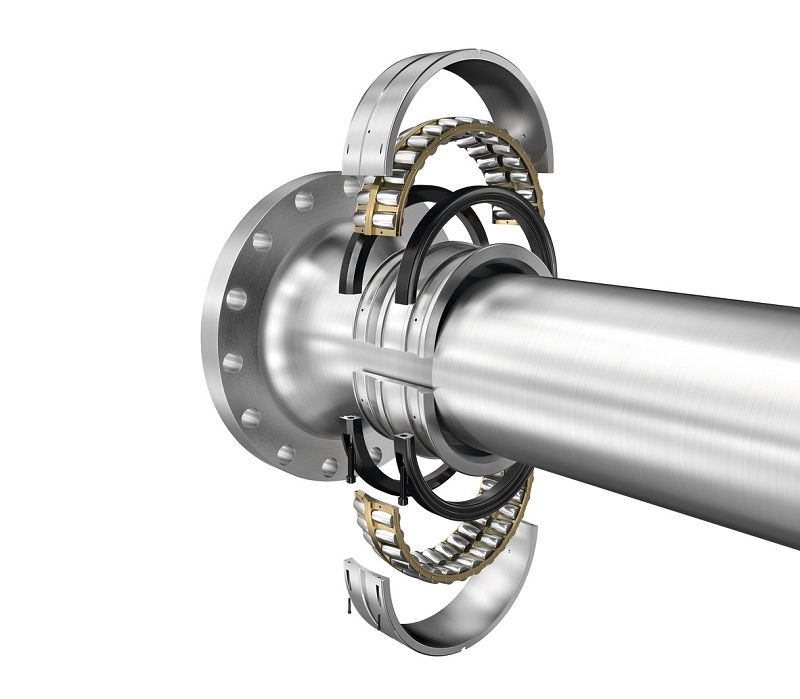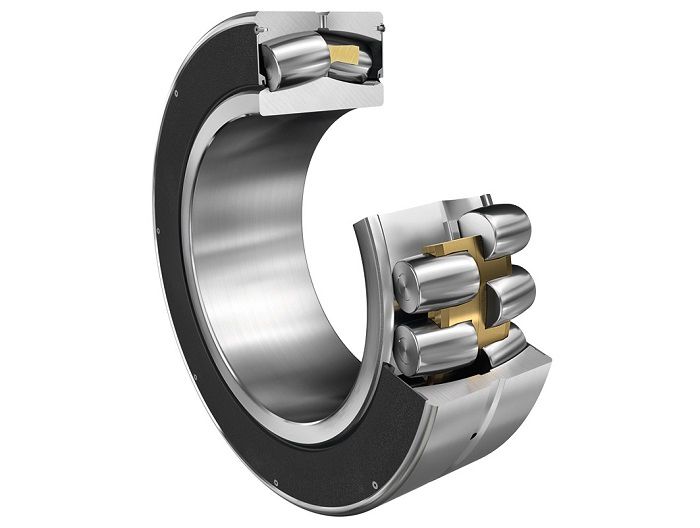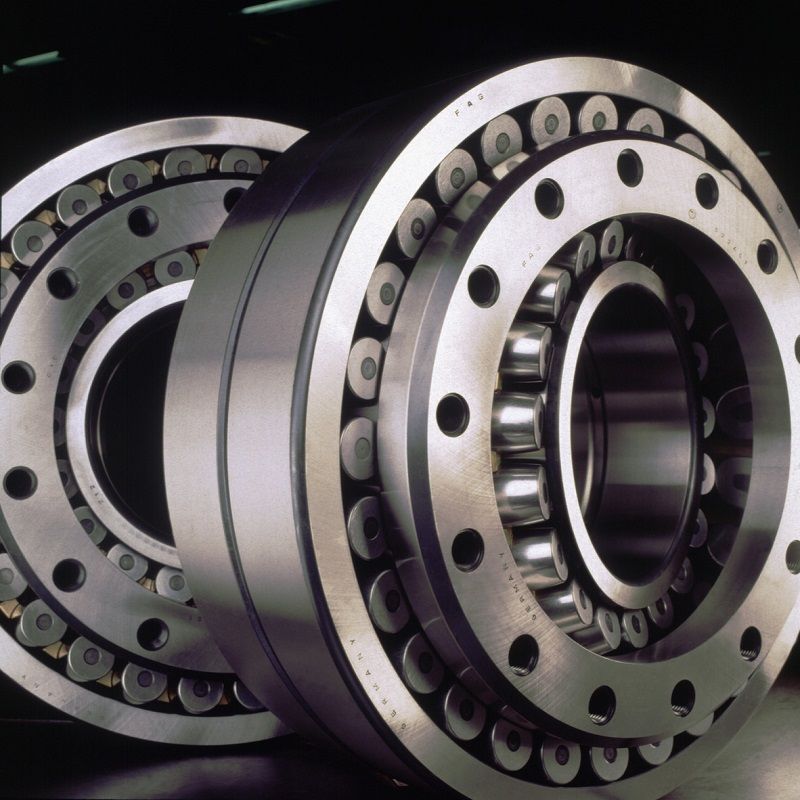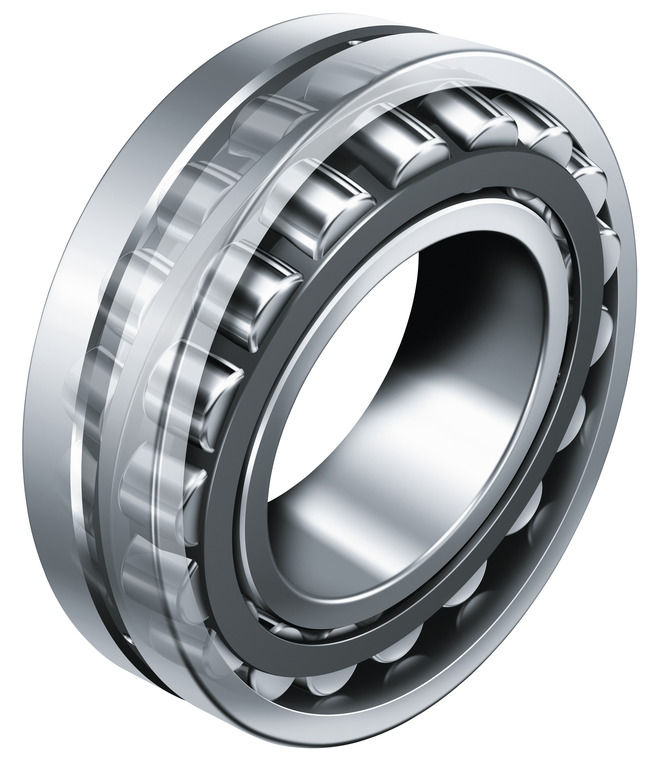Unfortunately, lifting a 1,750-ton, 132-foot-long wrecked submarine from 3+ miles (16,500+ ft.) below the ocean surface—under total secrecy—isn’t the easiest of tasks.
An elaborate story was put together of a commercial deep-sea mining vessel—The Hughes Glomar Explorer—owned by eccentric billionaire Howard Hughes. This ruse suggested that the ship was simply conducting marine research at extreme ocean depths.
The vessel included a derrick like an oil-drilling rig, a pipe-transfer crane, two tall docking legs, a huge claw-like capture vehicle, a center docking well (called the “moon pool”) large enough to contain the hoisted portion of the sub, and doors to open and close the well’s floor.
The heavy-lift operation was extremely complex, according to the CIA museum. While maintaining its position in the ocean currents, the ship had to lower the capture vehicle by adding 60-foot sections of supporting steel pipe, one at a time.
When it reached the submarine section, the capture vehicle then had to be positioned to straddle the sunken submarine section, and its powerful jaws had to grab the hull. Then the ship had to raise the capture vehicle with the section in its clutches by reversing the lift process and removing supporting pipe sections one at a time until the submarine was securely stowed in the ship’s docking well.
This mission began on July 4, 1974, while the “commercial mining vessel” was being closely monitored by nearby Soviet ships. Although a portion of the submarine broke apart, the Glomar crew successfully hauled up part of the submarine providing deep insight into the Soviet Union’s strategic capabilities at the time.
The intricate, deep-cover operation was deemed one of the most expensive intelligence operations during the Cold War—costing an estimate $800 million then and roughly $4.4 billion by today’s standards.
 Split into halves for easy mounting and dismounting, split spherical roller bearings are mainly used in the aftermarket for quick and cost-effective replacement of conventional “solid” spherical roller bearings.
Split into halves for easy mounting and dismounting, split spherical roller bearings are mainly used in the aftermarket for quick and cost-effective replacement of conventional “solid” spherical roller bearings. High-Pressure Grinding Roll (HPGR)
A sealed SRB with a 1,950 mm outer diameter from Schaeffler was used in an HPGR for a mining application.
“The seals prevent the crushing materials from contaminating the bearing,” Lenz said. “The sealed bearing offers significantly longer operating life and can reduce the high cost of unplanned shutdowns.”
As bearing technology evolves, Schaeffler engineers work with their customers in the field to provide additional assistance and bearing improvements.
 Sealed spherical roller bearings are designed to keep contaminants out of bearings in manufacturing environments such as mining operations. Schaeffler sealed 241/1250 spherical roller bearings with an outer diameter of 1,950 mm operate in one of the world’s largest high-pressure grinding rolls (HPGRs).
Sealed spherical roller bearings are designed to keep contaminants out of bearings in manufacturing environments such as mining operations. Schaeffler sealed 241/1250 spherical roller bearings with an outer diameter of 1,950 mm operate in one of the world’s largest high-pressure grinding rolls (HPGRs).Until now, HPGR operation has required high quantities of grease to purge contamination from inside the bearings. While necessary, this practice wastes resources and significantly contributes to a mine’s preventive maintenance expenditures. By introducing a sealed bearing for this challenging application, Schaeffler’s innovation aims to not only provide state-of-the-art solutions, but increase mining productivity altogether.
“Our field engineers inspected these large bearings to determine if we could run the bearing longer or what the maintenance cycle may look like in the future. We’re regularly working with our customers in the field to provide feedback and additional maintenance suggestions,” Lenz added.
HPGRs are gaining more acceptance today in hard-rock processing primarily due to their energy efficiency benefits—sealed bearings can assist in making the crushing and grinding circuits much more sustainable in the future.
The Apache Maritime Vessel
A pipelaying ship, according to offshore-fleet.com, is a maritime vessel used in the construction of subsea infrastructure. It serves to connect oil production platforms with refineries on shore. To accomplish this goal, a typical pipelaying vessel carries a heavy lift crane, used to install pumps and valves, and equipment to lay pipe between subsea structures. Pipelaying ships make use of dynamic positioning systems or anchor spreads to maintain the correct position and speed while laying pipe. Advancements in technology allow pipes to be laid in water depths of more than 2,500 m.
The Apache 1 was an engineering project that ended up not being produced due to budget constraints, however, Schaeffler was involved in supplying triple-ring SRBs for the Apache II which was built in 1980.
“A different type of triple ring bearing was used for the Apache II. This design consisted of two outer ring halves and one inner ring. The two outer ring halves allowed for zero bearing clearance, which prevented damage to the rollers,” said Martin Grehn, former vice president development roller bearings at Schaeffler Technologies.
They had the pipelines on the land, welded together and the SRBs were ultimately used because of the distance between the components. These triple-ring bearings boasted a 1,750 mm outer diameter, as well as a weight of 6,000 kg.
 Featuring three rings and two sets of rollers, triple-ring bearings are mainly used in the paper industry, where they must handle loads and movements in various directions at the same time. A triple-ring bearing was used on the boat that recovered the sunken Russian submarine as part of the CIA’s project “Azorian.
Featuring three rings and two sets of rollers, triple-ring bearings are mainly used in the paper industry, where they must handle loads and movements in various directions at the same time. A triple-ring bearing was used on the boat that recovered the sunken Russian submarine as part of the CIA’s project “Azorian. The London Eye
This Ferris wheel—opened in 2001—is 135 m high, has a circumference of 424 m and a total weight of 2,100 tons. Its 32 capsules carry up to 25 passengers each. The wheel revolves at a speed of 0.26 meters per second, corresponding to a 30-minute ride for one full revolution—plenty of opportunity to enjoy London from above.
The wheel revolves smoothly thanks to the large FAG SRBs, each of them with an outside diameter of more than two meters and weighing several tons. The two spherical roller bearings were mounted in a locating/floating bearing arrangement in the hub on the axle of the Ferris wheel.
The two large GE440-DW spherical plain bearings from Schaeffler were essential for slewing the wheel from its horizontal mounting position across the Thames into its vertical operating position (slewing angle of more than 90°) with a resulting contact pressure of more than 450 N/mm2.
Since then, the spherical plain bearings have had the task of compensating for wind-induced micromovements that would otherwise have an adverse effect on the comparatively stiff steel
construction, according to Jens Fella, vice president research and development, spherical roller bearings and mechanical systems at Schaeffler Technologies.
Thanks to ELGOGLIDE, Schaeffler’s proprietary PTFE sliding layer, the large spherical plain bearings are maintenance-free and can accommodate extremely high loads with low moment levels. This guarantees long life even with contact pressures of 362 N/mm² that are very high for radial spherical plain bearings. If it hadn’t been for the large spherical plain bearings from Schaeffler, a totally different static design would have been required so that the wheel would probably look much less elegant today.
“Although many of our SRBs boast a standard design, we see a growing trend in custom bearings for unique applications like this,” Fella said. “At the time the London Eye opened, it was the largest Ferris wheel in the world. They originally wanted the bearings to run for roughly a year, possibly a year and a half, but they’ve been running without issue for more than 22 years!” Fella added.
A Constant Evolution
As far as the evolution of SRBs in the future, Lenz believes sustainability and energy efficiency will remain the most important factors in the coming years.
“Further lowering friction is going to be the next step. Downsizing options will also play an important role in the future as this industrial trend continues,” Lenz said. “All of the changes we might make will always be designed with sustainability in mind.”
Friction, CO² reduction, the green bearing of the future, these are all important customer requests in today’s market.
“If we can provide green components, this will give the customer an opportunity to provide products that are more energy efficient, sustainable and require less maintenance,” Lenz added.
schaeffler.us










